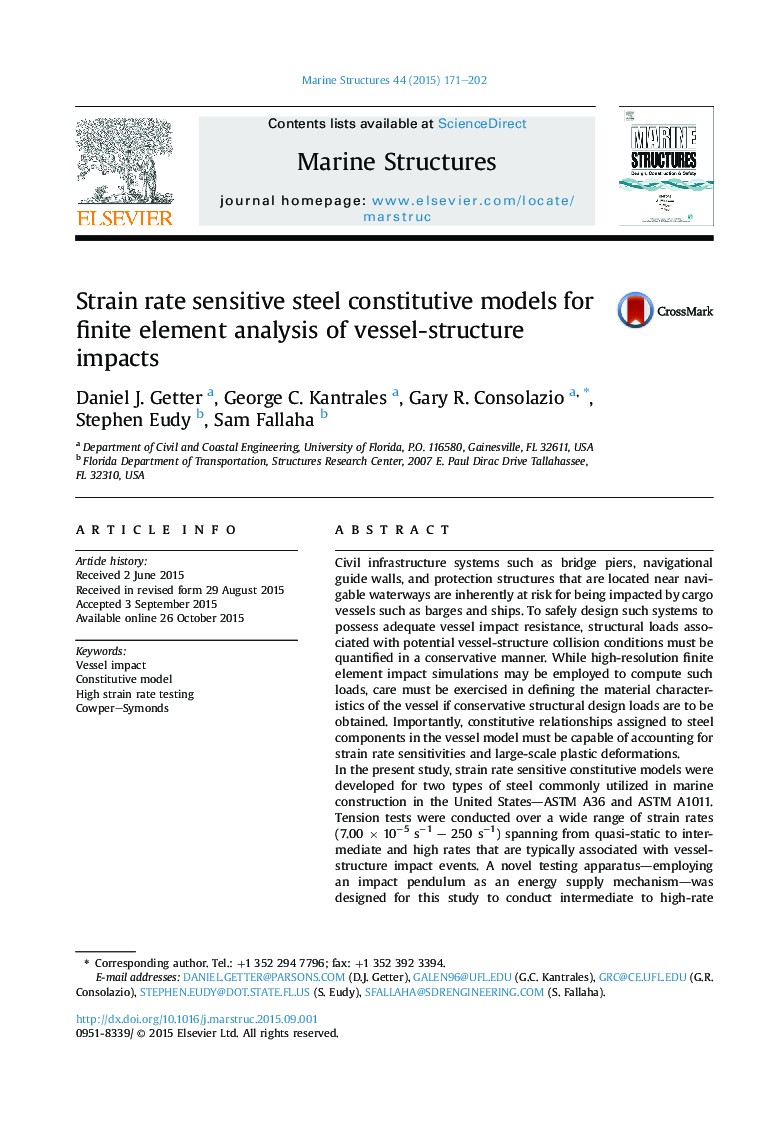| کد مقاله | کد نشریه | سال انتشار | مقاله انگلیسی | نسخه تمام متن |
|---|---|---|---|---|
| 294209 | 511354 | 2015 | 32 صفحه PDF | دانلود رایگان |
• A novel impact-based high strain rate test apparatus was developed and employed.
• A36 and A1011 specimens were tested in tension over a wide range of strain rates.
• Rate-sensitive constitutive models were developed and implemented in LS-DYNA.
• System-level demonstration was performed using impact testing and finite element analysis.
Civil infrastructure systems such as bridge piers, navigational guide walls, and protection structures that are located near navigable waterways are inherently at risk for being impacted by cargo vessels such as barges and ships. To safely design such systems to possess adequate vessel impact resistance, structural loads associated with potential vessel-structure collision conditions must be quantified in a conservative manner. While high-resolution finite element impact simulations may be employed to compute such loads, care must be exercised in defining the material characteristics of the vessel if conservative structural design loads are to be obtained. Importantly, constitutive relationships assigned to steel components in the vessel model must be capable of accounting for strain rate sensitivities and large-scale plastic deformations.In the present study, strain rate sensitive constitutive models were developed for two types of steel commonly utilized in marine construction in the United States—ASTM A36 and ASTM A1011. Tension tests were conducted over a wide range of strain rates (7.00 × 10−5 s−1 – 250 s−1) spanning from quasi-static to intermediate and high rates that are typically associated with vessel-structure impact events. A novel testing apparatus—employing an impact pendulum as an energy supply mechanism—was designed for this study to conduct intermediate to high-rate material testing. Features of the apparatus, discussed in this paper, overcome key problems encountered in other studies that have employed impact loading for tensile material testing. From the testing program, representative stress–strain relations and Cowper–Symonds strain rate sensitivity parameters were developed for the materials tested. Rate sensitivities of the two steel grades tested were found to be very similar to each other. Additionally, rate sensitivities from the present study agreed well with ultimate stress data measured in past studies of mild steel, but were found to be less rate-sensitive than yield stress data measured in past studies.
Journal: Marine Structures - Volume 44, December 2015, Pages 171–202
